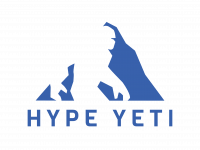Google measures the website by updating various algorithms. In Past years, Google used to update minor algorithms to meet certain parameters. Now, Google makes thousands of major algorithm updates every year like a panda, penguin, pigeon, hummingbird, Fred, Page layout, mobile update, Rank brain, etc.
Google Algorithm is a bunch of deciding rules that the web indexes utilize to decide the meaning of the site. Each web search tool has its own standard. From time to time, this Google algorithm calculation attempts to give better query items and significant answers for users on the web.
Every time, A webpages published, then this Google-bot comes across to crawl and then index and lastly it ranks those pages that are relevant to the intent. So whenever a user queries any specific keywords, then Google makes sure to give the best and most relevant answer.
In this matter, the Google algorithm works as the ranking factor for every website, that is the reason, Google rolls out new updates every year. Google algorithm updates are unnoticeable. Yet, sometimes, Google rolls-out is so superior that it discord the way we do SEO every time.
How Does Google Algorithm Work?
We will go through some points, which were officially listed by Google itself and they are:-
1. Meaning Of The Query
To give relevant results for users, Google must know the user intent. They must understand the natural meanings of those keywords/Query. By using a particular query, what user wants- either review, descriptions, graphs, or finding specific websites? Google must understand this user intent.
And sometimes, it’s necessary to understand to give freshness to content. For example, when we Search for trending products in the market then, of course, we want recent product details with fresh content.
2. The Relevance Of Pages
Secondly, the search engines have to find the relevant pages from those websites, that users query with keywords, which plays a big role here and it does by regular crawling and indexing of all websites and investigating and finalizing the content for a relevant query.
3. Quality Of Content
We all know that the “Content is a King” for a reason. Generally, Google has millions of pages for each keyword but has to filter the one that gives content best and demonstrates well, and matches user intent.
4. Usability of Pages
Google has continuously focused on the ranking factor in technical aspects. They make sure the web pages have a simple structure, are mobile-friendliness, are fast and responsive, and security of websites having HTTP, etc. All this in just a second!!
Also Read:- Top 7 Google Ranking Factor: An Ultimate Guide
Top Major Google Algorithm Updates and Its History
We will learn about the Top eight Google algorithm updates and their history also the new algorithm is to roll out in this mid-June 2021. So, why they were introduced by Google, we will know why it’s still a trending algorithm to follow in upcoming years.
1. Panda
Launched: February 24, 2011
Risks: The panda algorithm totally ignores a high percentage of duplicates, plagiarize, keyword stuffing, and thin content. It also affects the websites having low-quality inbound links.
How It Works: Back in 2011, It was announced as the First Search filter” that meets certain parameters by Google but Officially, this algorithm has been announced as Google’s core algorithm in 2016 and assigned a so-called Quality Score that was targeted for poor quality content and low-quality links. It has to be the ranking factor till now. Since the update has been more sudden.
Avoid Panda Attack: Optimize your website as per Google Criteria. Make sure your content is very unique and original. Panda hates low-quality content, so immediately you should be removed or improved low-quality content from your websites. No keyword stuffing; Keyword density should not be 3%-4% and also a proper Grammer should be done.
Always, the sites with duplicate content and low-quality links were ranked lower while the ones with the original content and with more quality links from relevant sites were ranked higher.
2. Penguin
Launched: April 24, 2012
Risks: Penguin algorithm fight against Spam Backlinks, Irrelevant incoming links, and Links with over-optimized anchor text.
How It Works: Between 2012 and 2016, it was also announced as the second Search filter that went through 10 documented updates evolving over time, and officially, the penguin algorithm has been announced as Google’s core algorithm in 2017.
This algorithm down-rank the sites which have spammy links using Black hat SEO techniques that seems manipulative to Google. It works in real-time. Penguin hits the specific keyword due to over-optimize which leads to 0 traffic.
Avoid Penguin Attack: To be aware of such a core algorithm, you need to stop building spam backlinks on irrelevant sites. Leaving links on the comment section at other websites is also considered spammy by Google itself.
The most effective practice is to use any tool to check the backlinks profile and run regular site audits to be updated on backlinks. You can use a Backlink checker like SEO SpyGlass, for details. These tools can analyze every type of backlink you have created for your websites.
3. Humming Bird
Launched: August 22, 2013
Risks: Hummingbird hazards are very low-Quality content with keyword stuffing.
How It works: Humming Bird has been positioned as the complete overhaul of the core algorithm. since 2013, the Hummingbird algorithm works on user intent and its real-time algorithm means it manipulates search results very frequently.
This algorithm helps to analyze and interprets the meaning of keywords that the user searches for and wants to provide an accurate result that the search intent wants to be based on an example like the above weather forecast example;
Also, Google has improved search query intent results based on the knowledge graph, the result looks like this; Google my business listing, etc to show more relevant results. This algorithm plays a very important role in semantic searches in the google search bar, local search, and voice search as well.
Avoid Penguin Attack: To be safe and updated from Humming Bird, you should generate content with proper keywords in right place without keyword stuffing. Always place the H1 and H2 sub-heading with the targeted keyword, alt tag as well as content body. The keywords need to place naturally everywhere.
they could be title or meta descriptions so to make it very obvious to both visitors and Google that your site is relevant enough to a specific topic. For high-Quality content, you must have an idea about SEO content writing. Always make sure to give the best demonstration of content.
4. Fred
Launched: March 7, 2017
Risks: Google Fred does not like distracting ads on the web pages and also the unnecessary pop-ups that hide the important content of pages. It absolutely disregards content that has ads/promotions or offshoot connects that appear to be misleading advertisements (resembles a download or play catch to fool somebody into clicking).
How It works: Fred algorithm appears to hit those sites that have an enormous number of advertisements and appear to have been made determined to create income over taking care of a client’s concern.
Avoid Fred Attack: To be safe from Fred Attack, you must maintain ads and content ratio on your websites and blog. Make sure to not distract your user with those ads. This may lead to a decrease in your user visiting your pages.
5. Google mobile Friendly Update
Launched: April 21, 2015
Risks: Mobilegeddon ignores poor mobile usability and the Lack of a mobile version of the page.
How It Works: Google released significant a new mobile-friendly ranking algorithm design to boost mobile-friendly pages in mobile search result pages. Today, Google has been continuously working on mobile-first indexing, it all depends upon how fast the web pages are from the mobile version.
So, Google can rank them on that criteria. Mostly named as Mobilegeddon update make sure to give mobile-friendly optimized pages rank higher in Google search result pages and those pages that are not mobile optimized then, there’s a big chance of downranked of sites.
Avoid Mobile-geddon Attack: Recently, Google has started to give priority to mobile-friendly websites that improve a good user experience. So, always make sure to optimize your web page’s speed and usability.
To check the speed of both desktop and mobile versions, you can use a page speed insight developer for better results. Here, you can find the reasons behind the slowness of websites including page interactivity, landing page, and visual interactivity.
If you want to test; whether web pages are friendly or not then, you can use a mobile-friendly test tool for better understanding. This tool helps to find out whether web pages are mobile-friendly or not. So, make sure your every web page is mobile-friendly.
6. BERT (Bidirectional Encoder Representations from Transformers)
Launched: October 22, 2019
Risks: BERT affects the poorly written content of websites.
How It Works: BERT is known as Bidirectional Encoder Representations from Transformers" an open-source neural- network technique for natural language processing (NLP). BERT helps to understand each and every word of the sentence in a natural way. Rather than looking at words one by one. This Google algorithm helps to know the intent of the query since it looks at the words before and after it.
Avoid BERT Attack: Nowadays, Google is finally appreciating the good content. If you have ever noticed that your site is affected by the BERT Google algorithm, then make sure to optimize and audit your content. Content should not be thin and poorly written, rather it should be in a long frame and SEO-friendly.
7. Page Experience
Launched: Mid – June 2021
How It Works: Google first announced this algorithm to roll out in March but later on, it has been Postponed. Finally, in this mid-June Google is about to roll out the page experience algorithm to judge web pages depending on how users perceive the experience of interacting with pages.
This Google algorithm mainly consists of seven-element. From that, core web vitals measure the important metrics over web pages. As Google has already mentioned the page experience criteria to make aware of what it wants our web pages to be and how users interact with web pages.
Page experience consists of ranking factors including mobile-friendly, safe browsing (HTTPS), page speed update, and intrusive interstitials penalty. Google search console has already added its needed features about page experience including core web vital and other ranking signals.
Google may live Page Experience algorithm any time in this month June. So, still, you have plenty of time to be prepared!
- Core Web Vitals:
As discussed above Core Web Vitals are metrics focusing on site speed, interactivity, and visual stability of web pages. They are:
- Largest Contentful Paint (LCP): LCP metric estimates the loading performance of the web pages. To give a good user experience, LCP should be in the range of 2.5 seconds, when pages start loading.
- First Input Delay (FID): FID metric estimates the interactivity of users with webpages. This ought to be under 100 milliseconds.
- Cumulative Layout Shift (CLS): CLS metric estimates the steadiness of points of arrival. the page ought to keep a CLS of under 0.1.
Therefore, HypeYeti Marketing Pvt. Ltd was founded with the goal of helping clients thrive in today’s highly competitive marketing environment.




